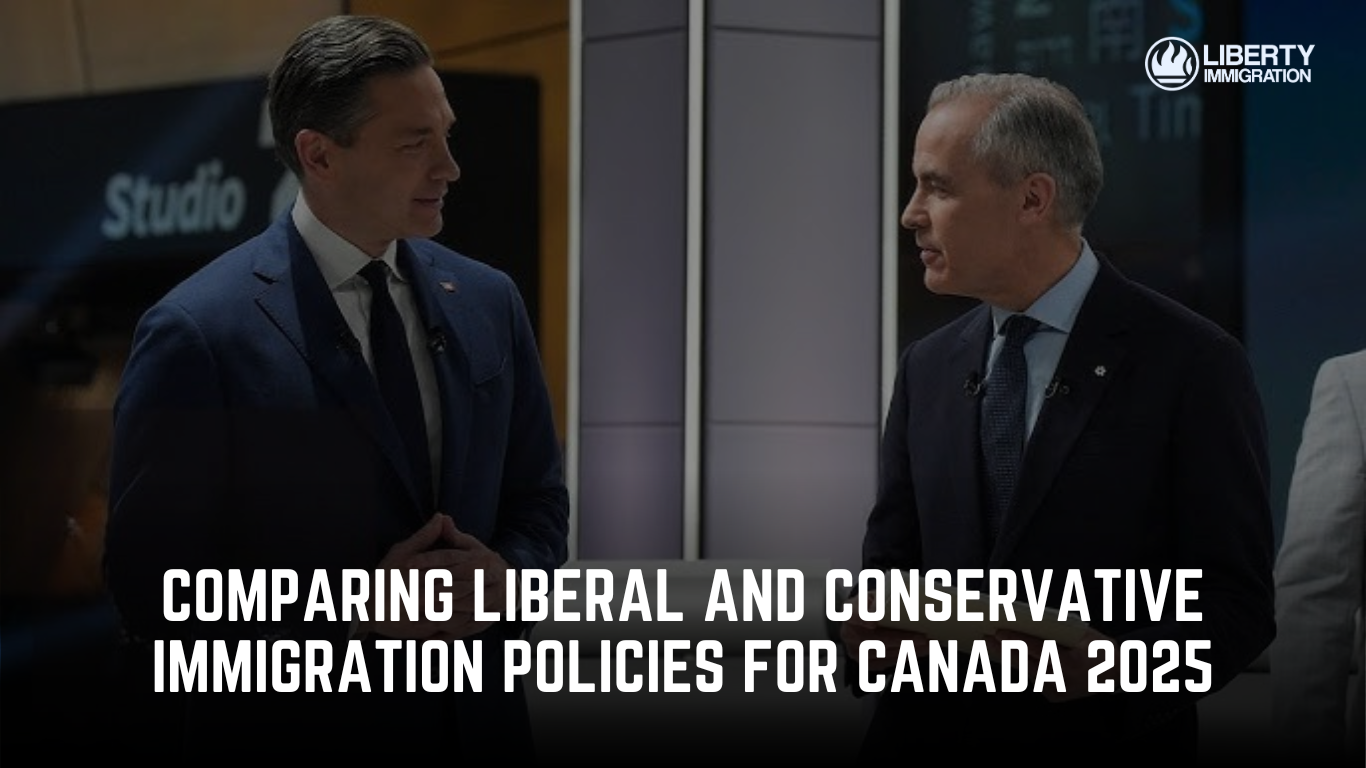Comparing Liberal and Conservative Immigration Policies for Canada 2025

As Canada prepares for the 2025 federal election, one of the biggest issues on everyone’s mind is immigration. It’s easy to see why — immigration plays a huge role in shaping Canada’s future. It affects everything from our economy to our communities, and even the job market. So, what are the big political parties saying about it?
Whether you’re a new immigrant, someone planning to move to Canada, or just curious about how our immigration system might change, it’s important to understand where the major parties stand. The Liberals and Conservatives have laid out very different plans for 2025 and beyond. Let’s break it down.
Why is Immigration Such a Hot Topic in Canada Right Now?
Immigration has always been central to Canada’s identity. But recently, the topic has sparked more debate than ever. Why?
- Rapid population growth: Canada brought in over a million newcomers in 2023 alone.
- Housing crisis: Many Canadians feel there aren’t enough homes, and immigration is adding pressure.
- Jobs and the economy: With labor shortages across many industries, skilled immigrants are more essential than ever.
Given all this, it’s no surprise that both Liberals and Conservatives are proposing different visions for how immigration should work in the coming years.
Liberal Party Immigration Plan (2025)
Under Prime Minister Justin Trudeau, the Liberals have focused heavily on welcoming newcomers to build a stronger, more diverse Canada. Their immigration policy reflects that mindset.
Here’s what the Liberals are promising:
- Raise immigration levels: The Liberals plan to bring in about 500,000 permanent residents each year by 2026.
- Emphasize economic immigration: Programs like Express Entry and the Provincial Nominee Program (PNP) will keep growing.
- Create a new program: They’re proposing a program to help undocumented workers gain permanent status.
- Improve family reunification: Faster processing times and more support for families looking to reunite in Canada.
The overall goal? Build an inclusive system where immigrants help meet Canada’s economic demands while still supporting humanitarian needs like helping refugees and reuniting families.
Conservative Party Immigration Plan (2025)
The Conservatives, led by Pierre Poilievre, have taken a more cautious approach. They aren’t anti-immigration — in fact, they support a strong immigration system. But they’re pushing for more control and better planning.
Here’s what the Conservatives are proposing:
- Lower immigration targets: Focus on keeping immigration levels in line with housing and infrastructure capacity.
- Prioritize skilled workers: They want to make economic immigration faster and more efficient — especially for people with in-demand skills.
- Tougher border security: Crack down on illegal crossings and strengthen border protection policies.
- Reduce red tape: Simplify the immigration process and cut wait times for qualified applicants.
In a nutshell, Conservatives want a system built more on affordability and sustainability. Instead of focusing strictly on high numbers, they’re asking: “Can our cities and services keep up with this growth?”
Key Differences Between the Two Parties
If you’re trying to choose between the two visions, consider these major contrasts:
- Target Numbers: The Liberals aim for high immigration levels. The Conservatives want to slow it down to ease pressure on housing and infrastructure.
- Focus Areas: Both prioritize economic immigration, but the Conservatives put more emphasis on skilled trades and labor shortages, while Liberals also keep humanitarian and family reunification as front-and-center goals.
- Border Policy: Conservatives are focused on tightening borders, especially at irregular crossings like Roxham Road. Liberals prioritize streamlining pathways for vulnerable people.
How Will This Affect You?
That depends on your situation. Here are a few examples:
If you’re a skilled worker:
Both parties want to bring in people like you. The difference is how quickly that process moves and how much support you’ll get once you’re here. The Conservatives want faster, more efficient channels. The Liberals want to maintain high numbers while ensuring fairness.
If you’re waiting to sponsor family:
The Liberals are likely to keep or even improve family sponsorship options. The Conservatives haven’t said much on this yet, but historically they’ve supported family reunification — just at slightly slower growth rates.
If you’re asylum-seeking or undocumented:
Liberals are offering more flexible pathways. The Conservatives, on the other hand, lean toward stricter rules and enforcement.
Which Plan is More Affordable?
Affordability is a huge concern for many Canadians right now — and it’s playing a major role in this immigration debate. The Conservatives argue that high immigration numbers are outpacing housing supply, putting pressure on rent and home prices.
The Liberals believe that immigration, if managed properly, actually fuels economic growth and helps tackle labor shortages in the long run — making life more affordable over time.
So, which side is right? As with most political debates, the answer isn’t black and white. It depends on how well policies are implemented and whether infrastructure can keep up with the population surge.
Final Thoughts: What Should You Watch For?
As we approach election day, keep your eyes open for these immigration issues:
- Updated immigration targets. Will either party adjust their numbers as the election nears?
- Job market analysis. How will immigration change based on labor demands?
- Responses to public pressure. With affordability concerns rising, public opinion might push both parties to tweak their policies.
So, where do you stand?
Immigration shapes more than just population numbers — it shapes our neighborhoods, economy, and shared future. As voters and residents, it’s crucial to understand each party’s vision and think critically about what makes the most sense for Canada in the years to come.
Whether you’re a long-time Canadian or planning to make Canada your new home, immigration policies directly affect your life. So, which direction do you think is better: a high-growth, open immigration system, or a more controlled, scalable one?
Whatever decision you lean toward, make sure it’s informed. Because this October, your vote matters — not just for today, but for the future you want for Canada.
Want to Stay Updated on Canadian Immigration?
Bookmark our site for weekly updates and practical guides about Canada’s immigration system. Whether you’re applying soon, waiting for a decision, or helping a loved one along the way, we’re here to help you navigate it all.
Let’s shape a brighter future—together.



